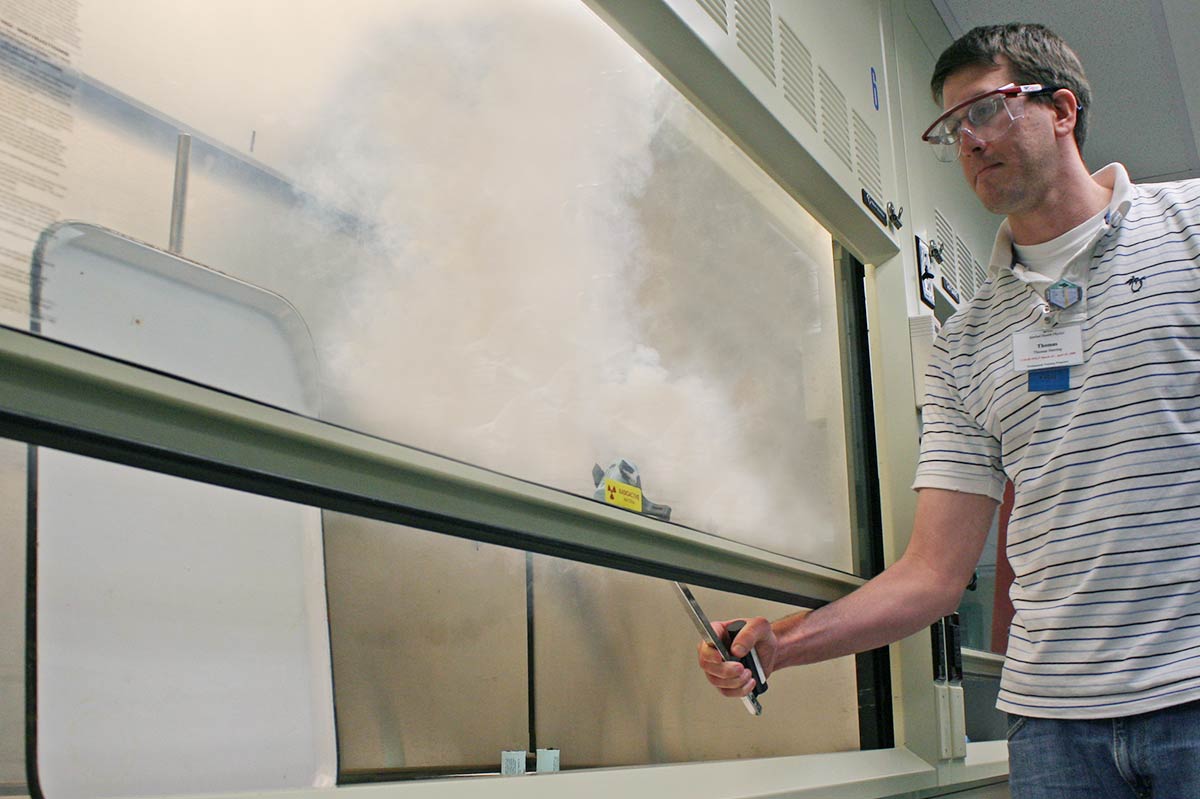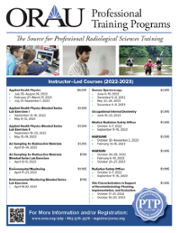Air Sampling for Radioactive Materials Online Training
Online course introduces participants to methods of testing air for radionuclides
Introduction
ORAU's PTP is now offering an expanded version of the Air Sampling for Radioactive Materials Online Training course.
Participants will now have access to both lecture and lab materials through self-paced modules and pre-recorded videos, developed by the same team that provides the instructor-led training. A request has been sent to the American Academy of Health Physics for 40 Continuing Education Credits for completing this course.
Course description
The use of radioactive materials in industry, research, and medicine has created a need for many facilities to perform routine air sampling in both the workplace and the environment. To help meet the need for trained personnel in this area, ORAU developed the Air Sampling for Radioactive Materials Online Training course.
The course includes 14 self-paced modules and 12 pre-recorded videos designed to demonstrate the equipment, techniques, and procedures used to collect and analyze air samples. The videos provide an unobstructed view of the instructors conducting each exercise and processing the data that is collected. This course is expected to take 40 hours to complete.
A list of the modules included in the course is provided below, along with instructions about the registration process. In order to complete the course, you will be required to pass an exam. A passing score is 70+ out of 100. You will have three attempts to successfully complete the exam. Upon successful completion of the exam, a course certificate of completion will be provided.
PTP instructors will be available via email, phone, or Microsoft Teams to answer questions and provide assistance as needed.
Target audience
This online course is designed for individuals with limited theoretical background and/or practical work experience who must establish and/or are involved with an air sampling program.
Cost
$2,195 - Tuition includes access to the course materials via the ORAU Learning Management System.
Questions
If you have additional questions about this course, please contact the Registrar.

